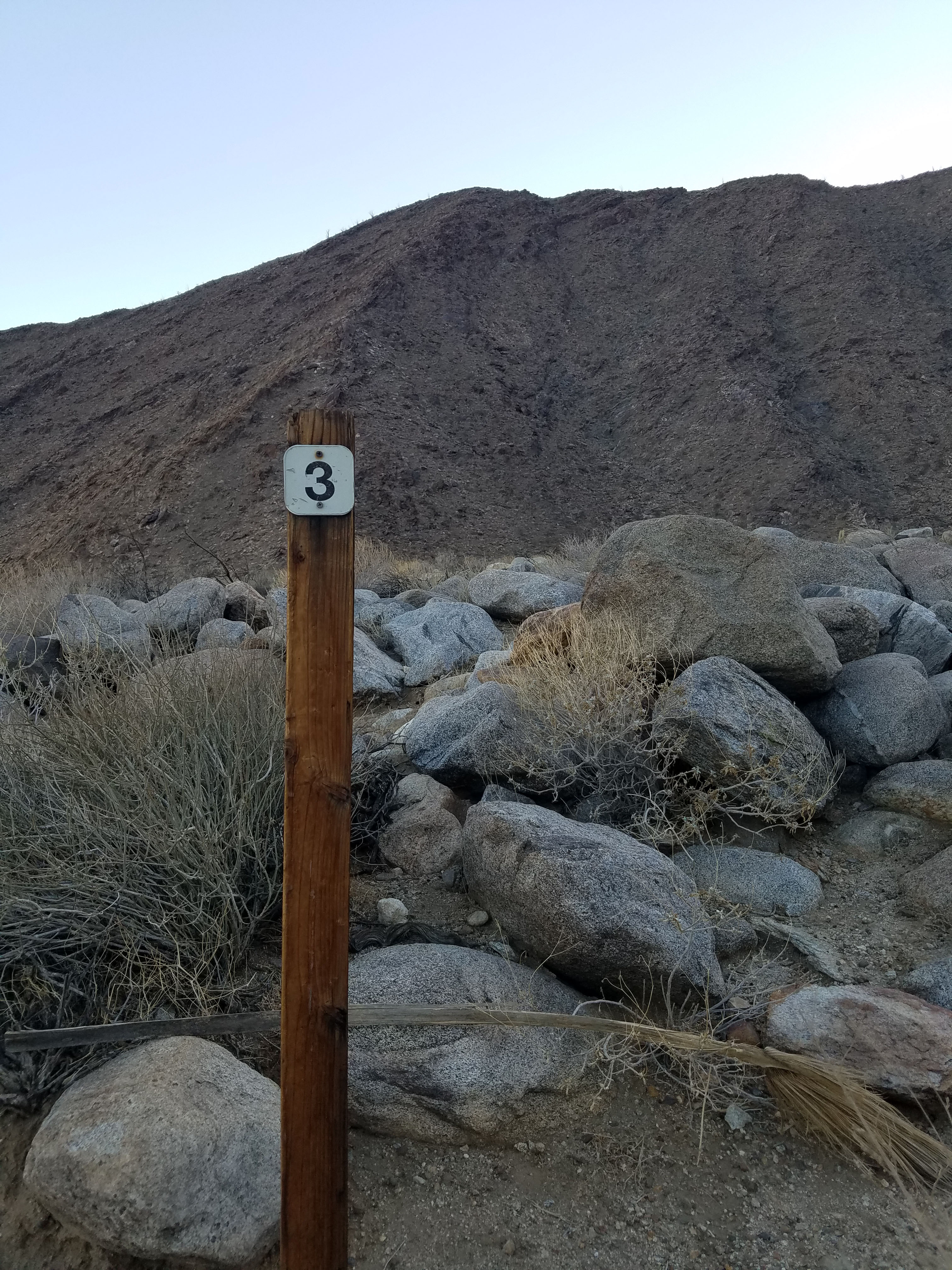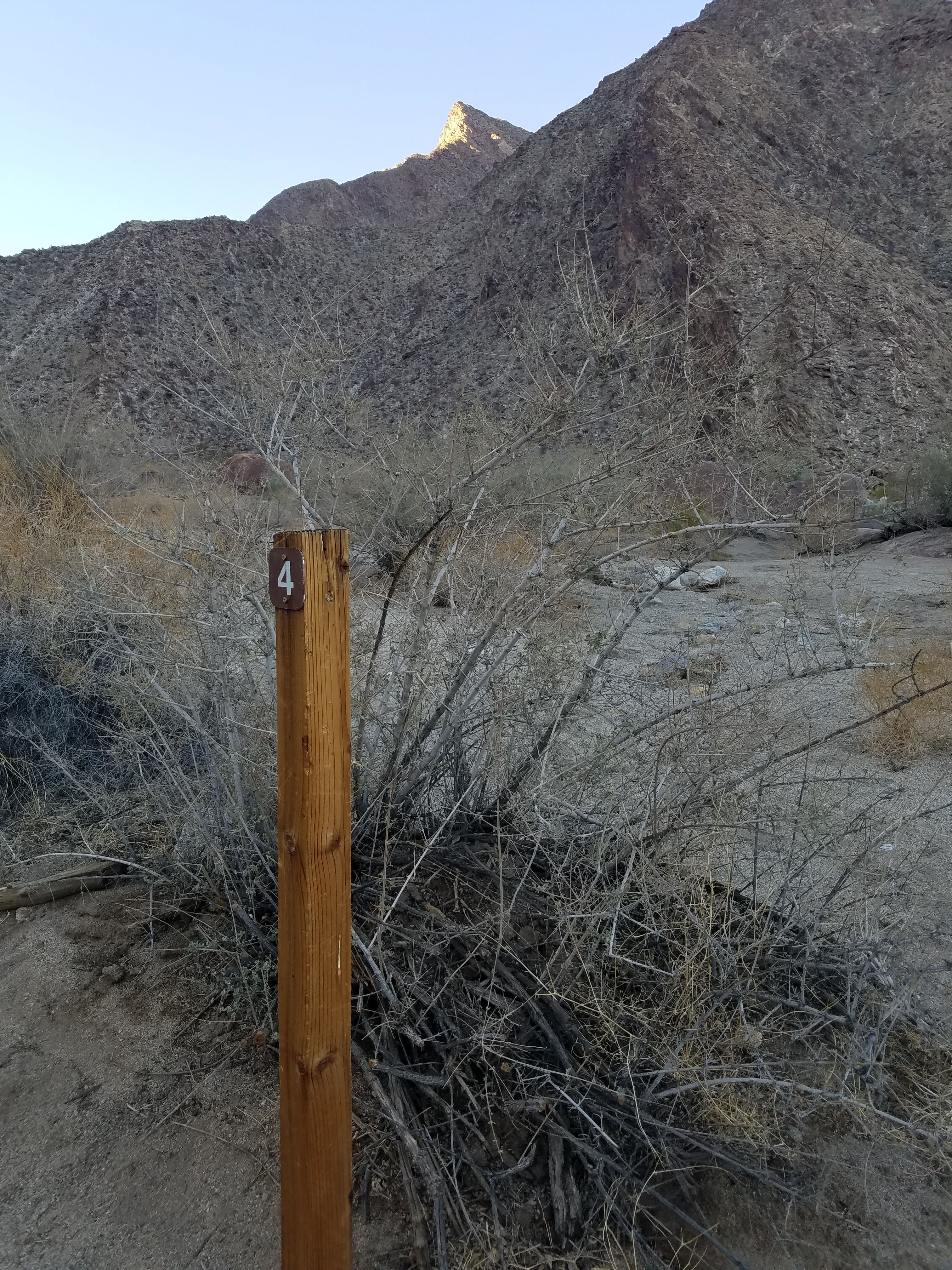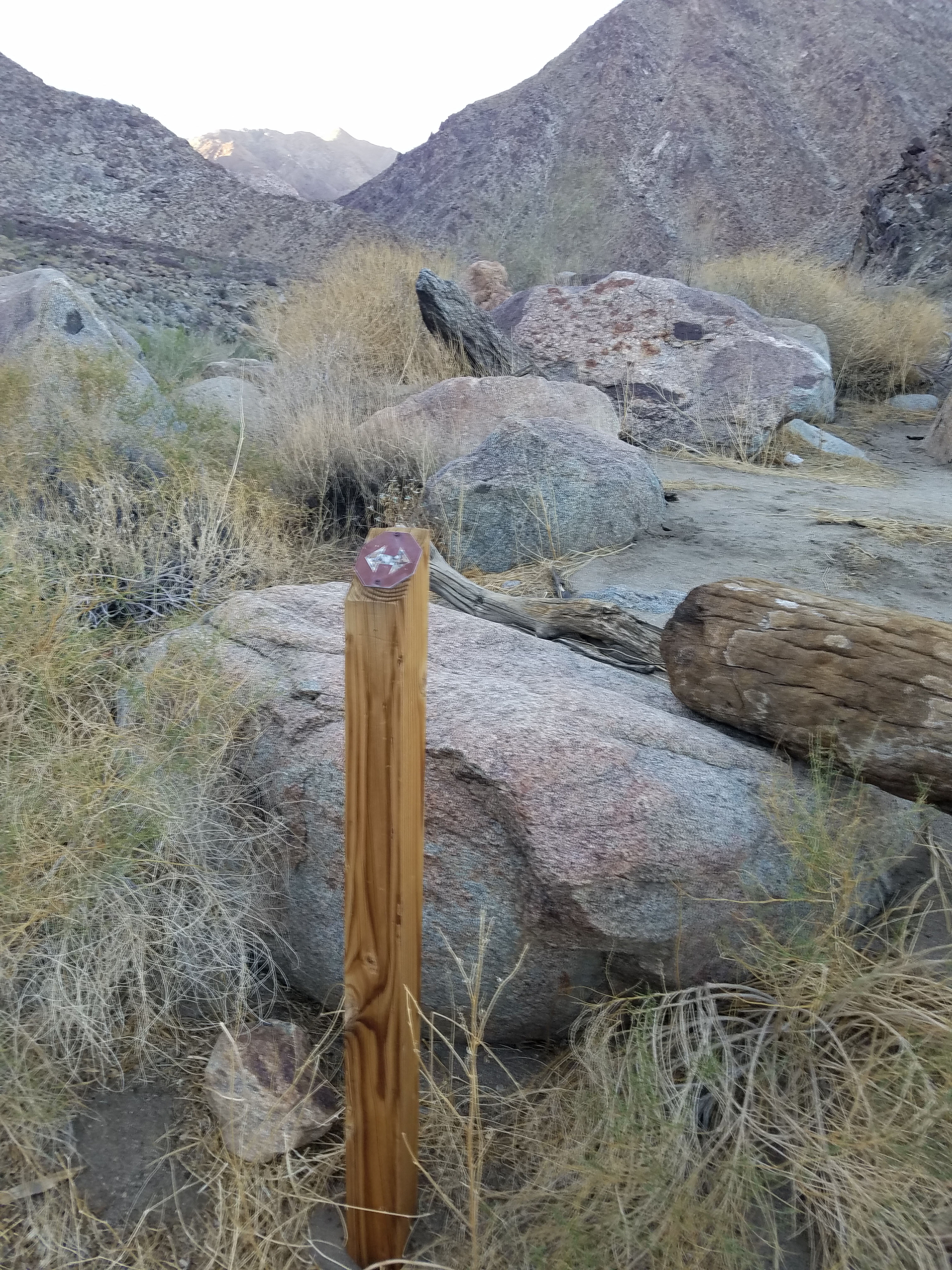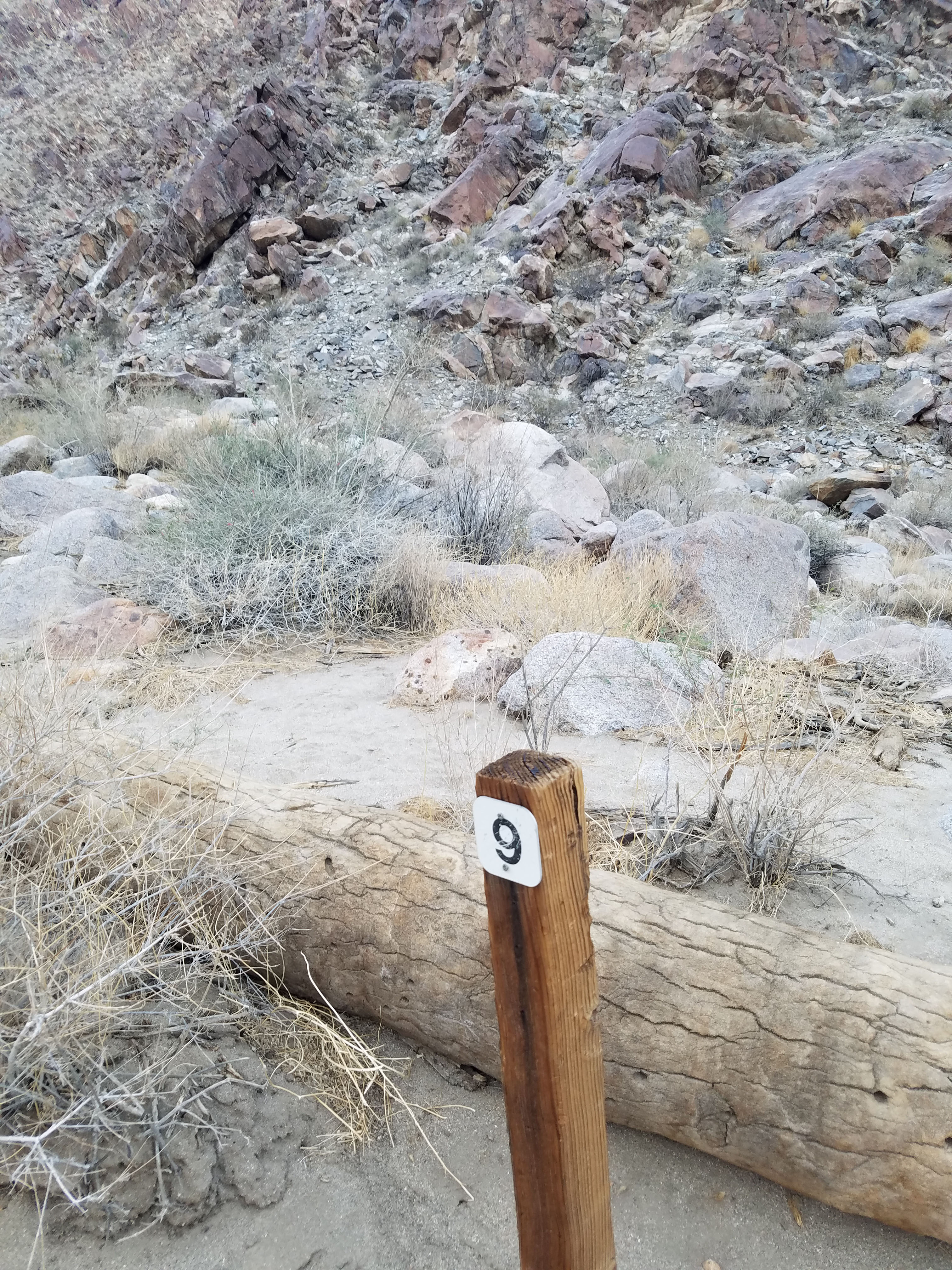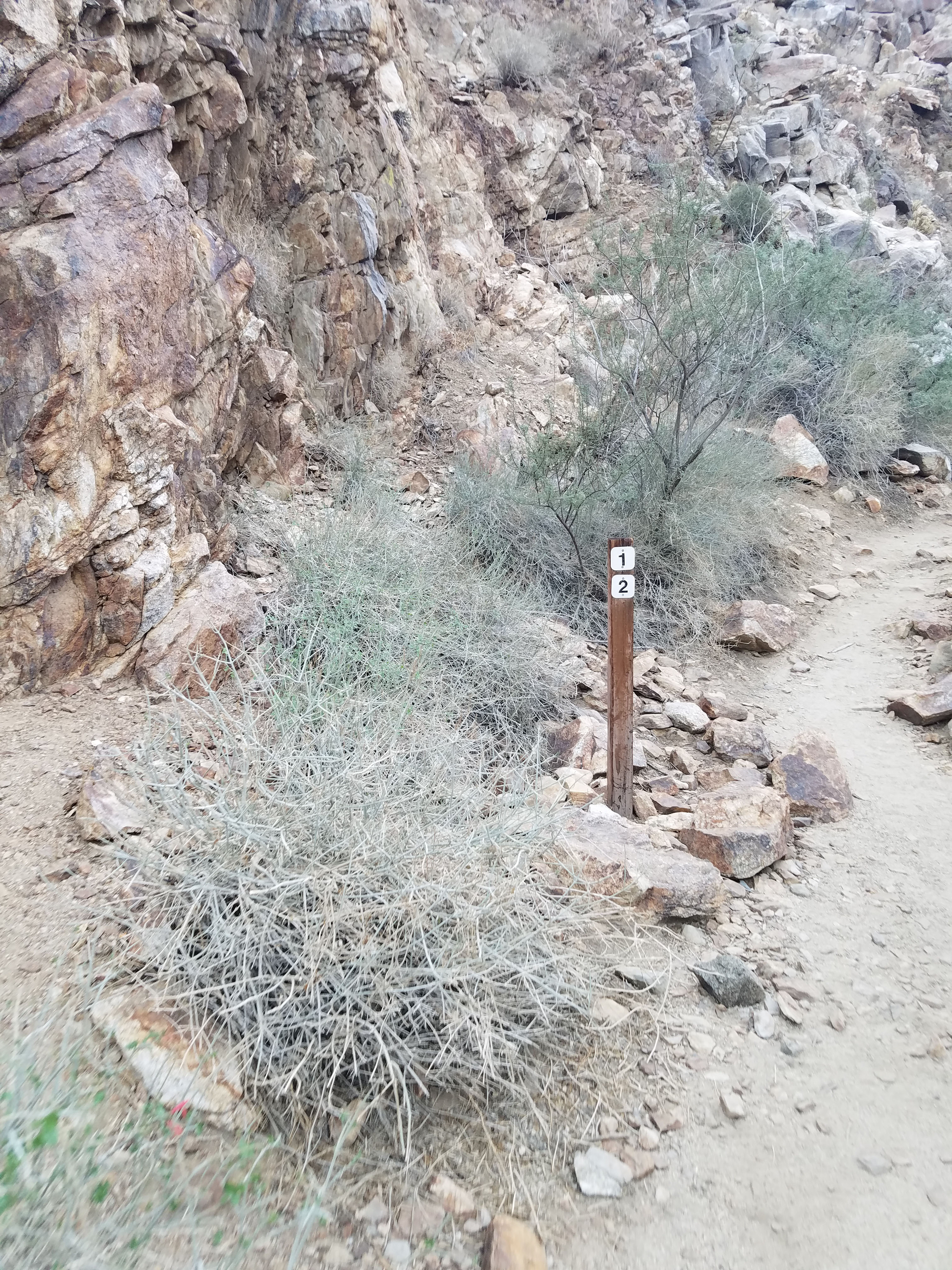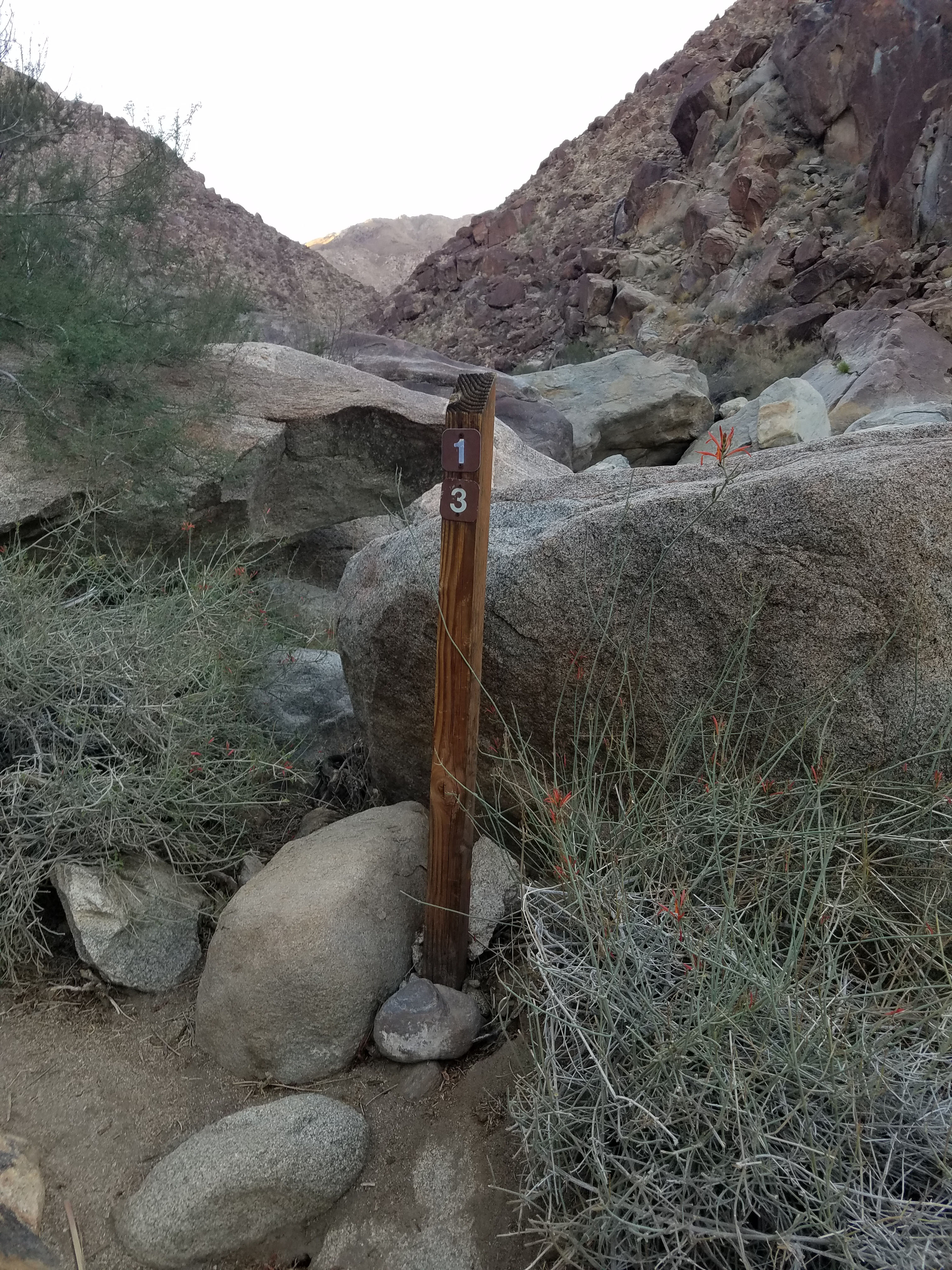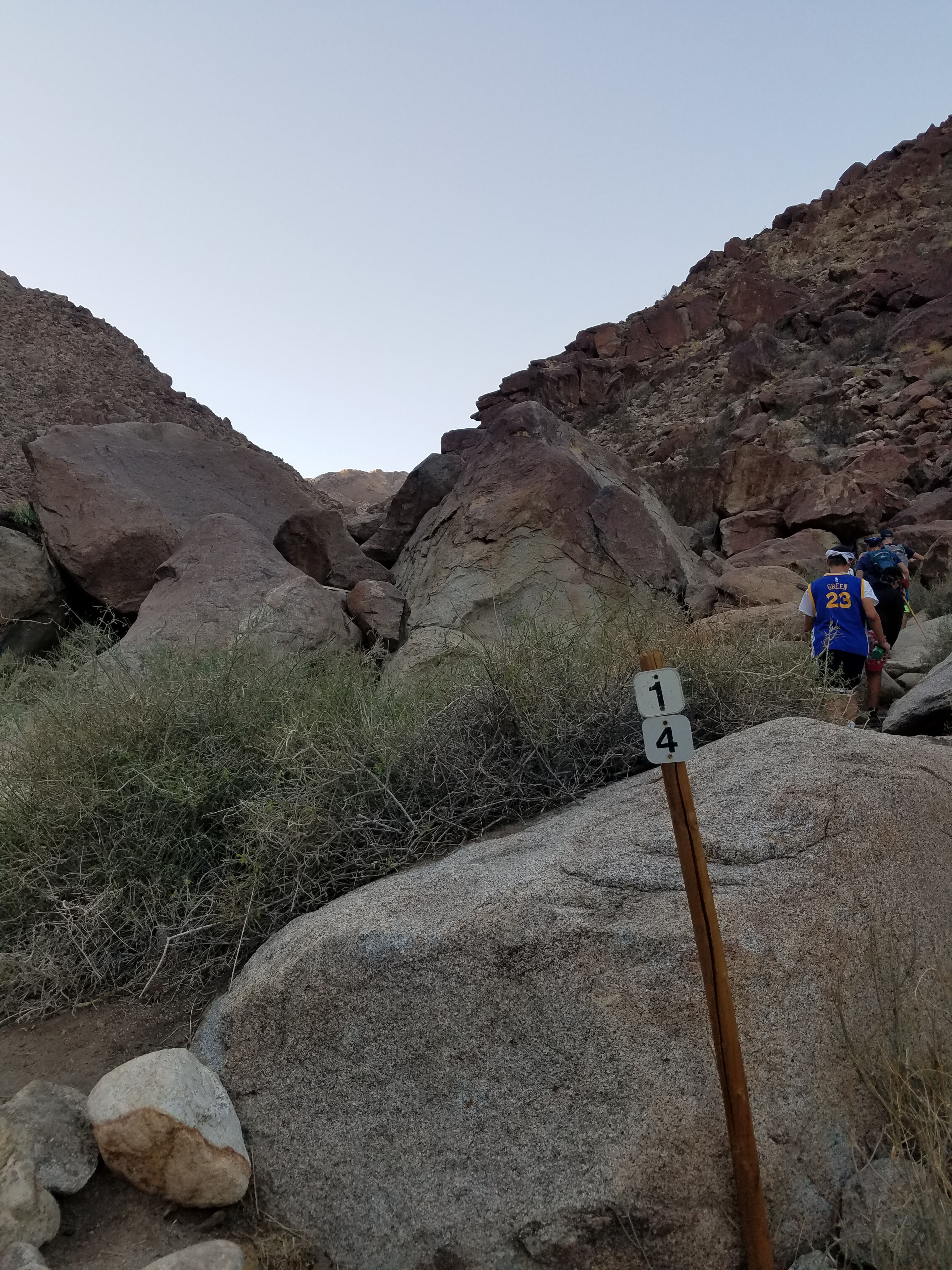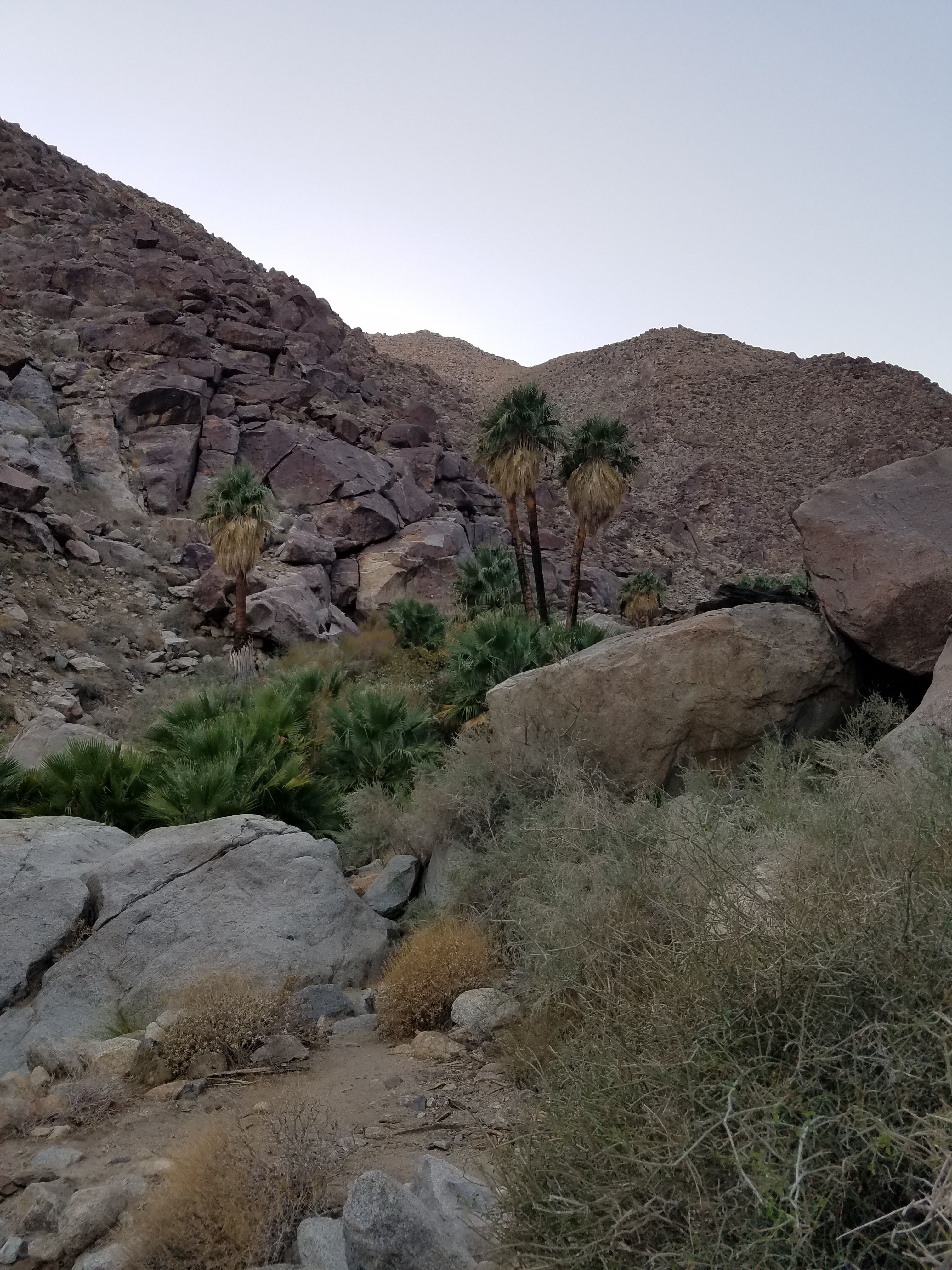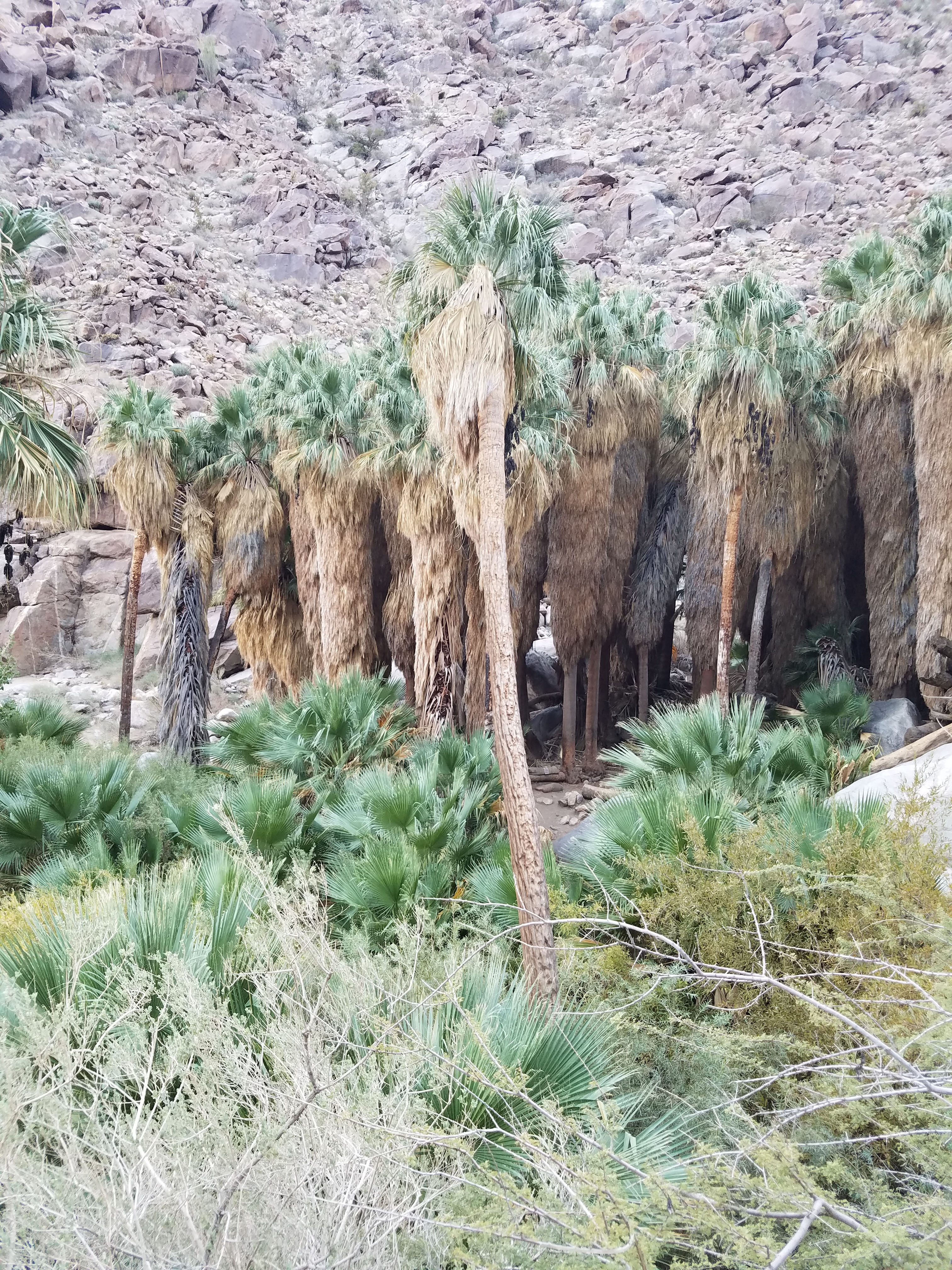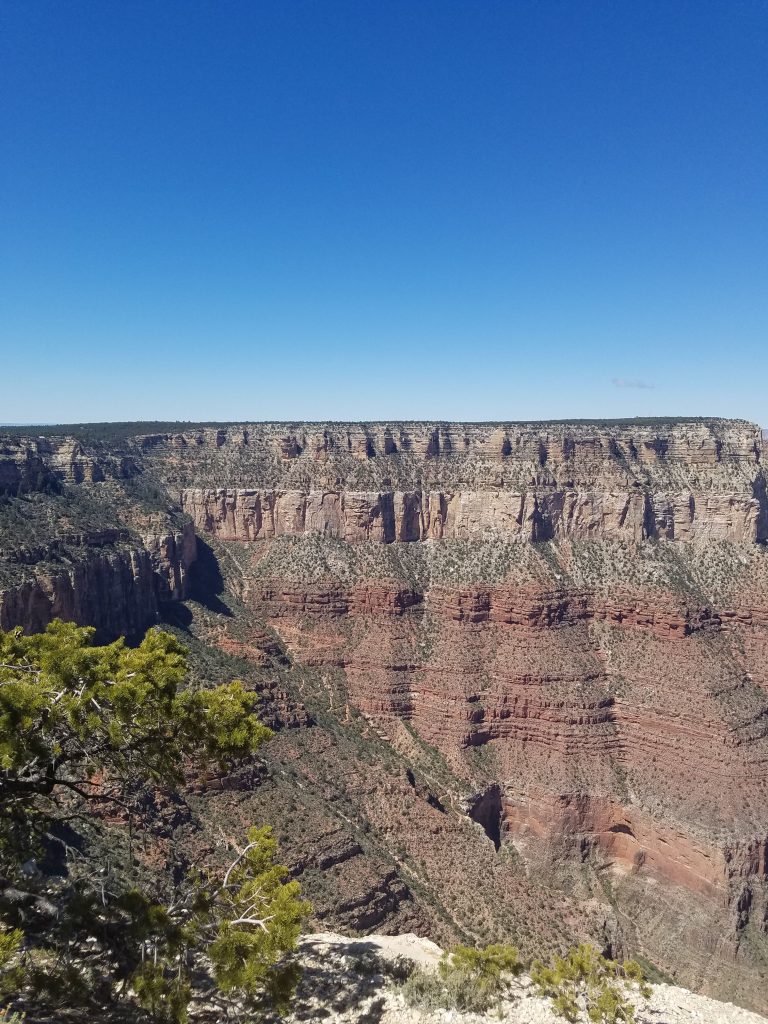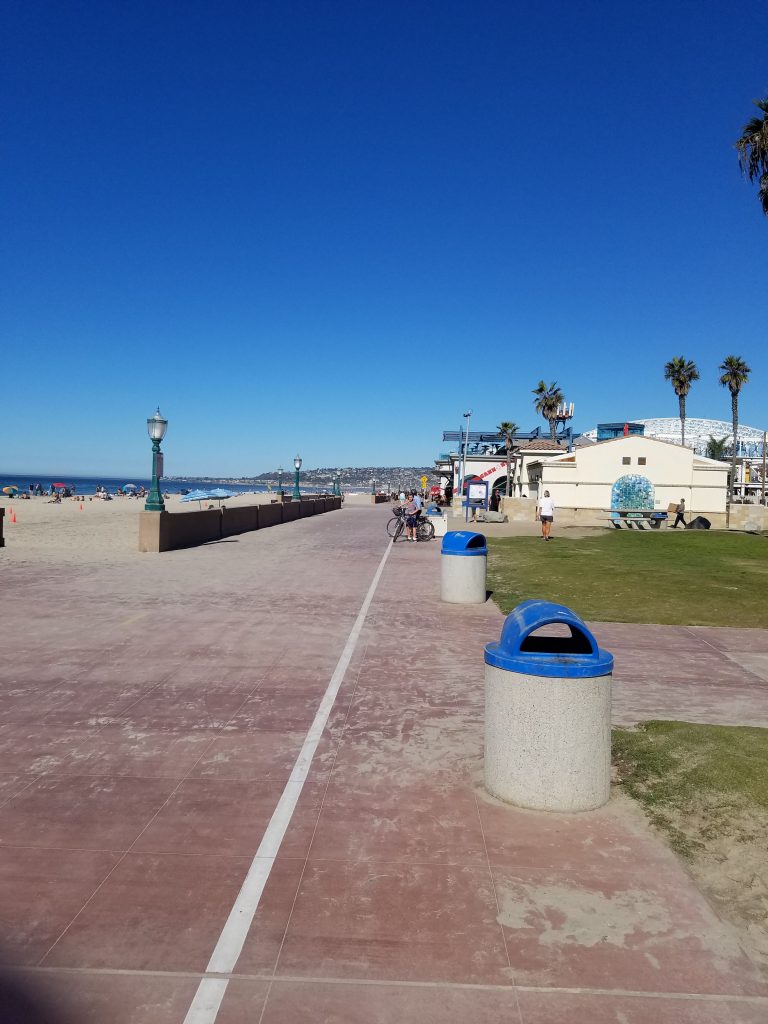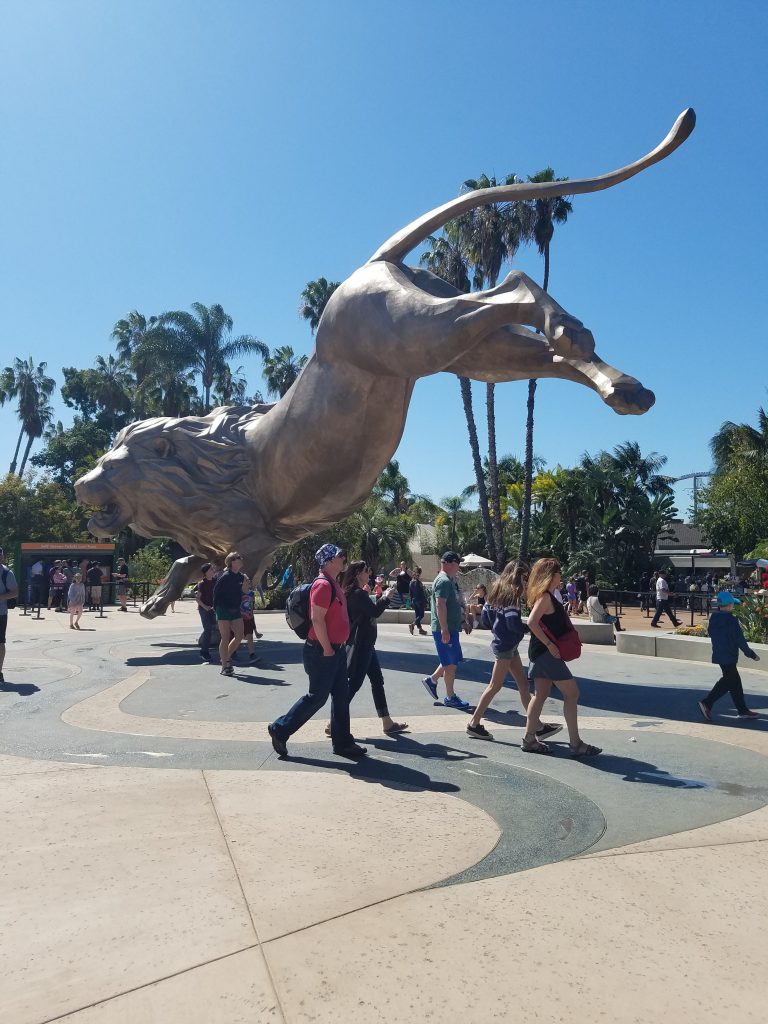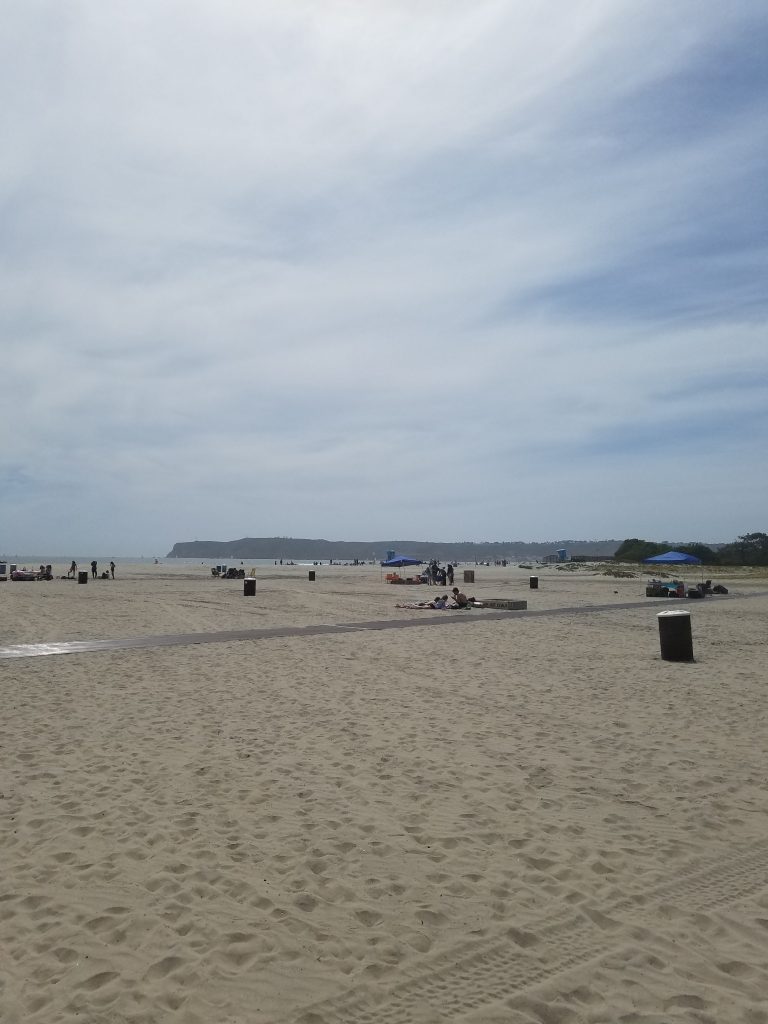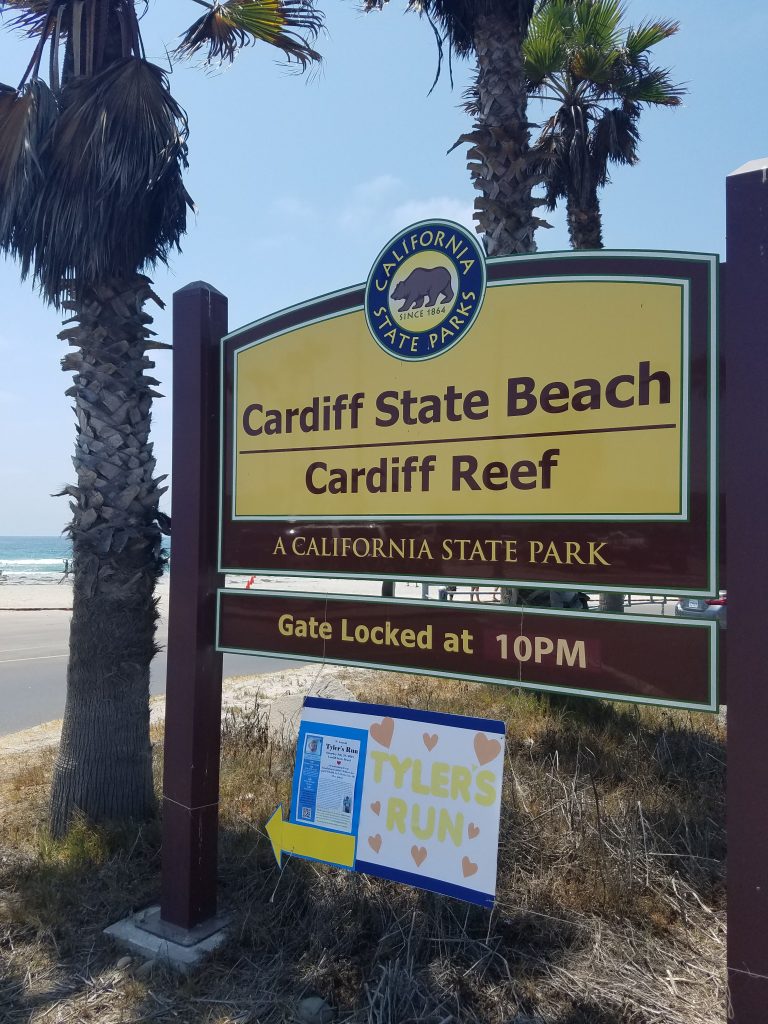San Diego Hikes: Borrego Palm Canyon
Anza-Borrego Desert State Park is a fairly isolated portion of San Diego County. Borrego Springs, home to the park’s headquarters, is to the only town of note. Borrego Springs is also home to Anza-Borrego’s most famous attraction, Borrego Palm Canyon. This is our guide to hiking Borrego Palm Canyon.
- Starting Point: 200 Palm Canyon Dr, Borrego Springs, CA 92004
- Length: 3 miles
- Elevation: 500 feet
- Type: Out-and-back
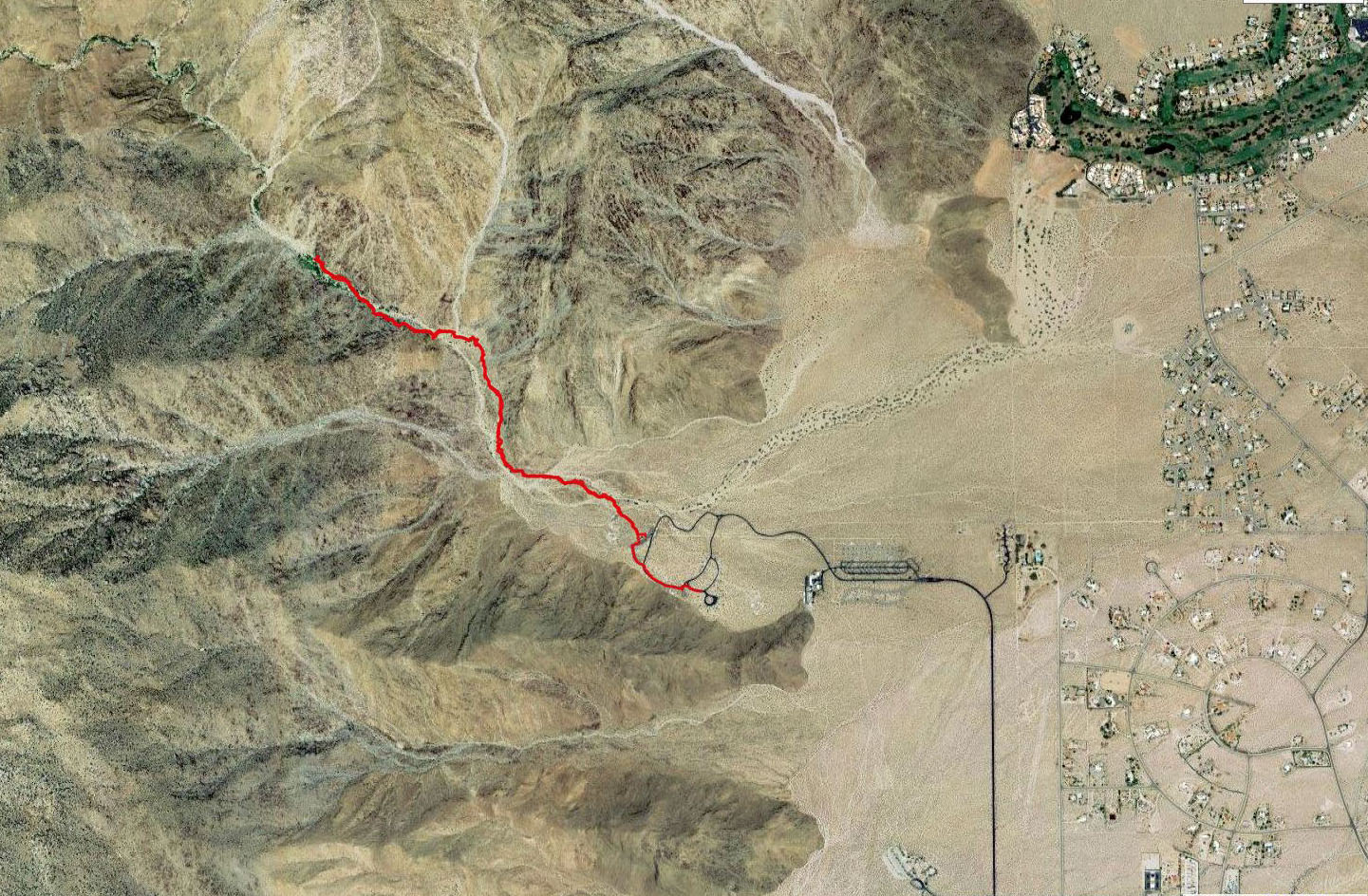
Anza-Borrego is about a 2-hour drive from downtown San Diego. It is part of the Colorado Desert and is due south of the Coachella Valley (Palm Springs/Indio). The desert is surrounded by mountains on three sides with the Salton Sea on the east side.
Much of the surrounding desert area is close to sea level. Borrego Springs is at the foot of the mountains at about 600 feet above sea level. The surrounding mountains rise to over 5,000 feet.
Overall Anza-Borrego is huge at 600,000 acres, almost as large as the state of Rhode Island. However, Borrego Springs and the Palm Canyon hike are on the western side of the park, close to where you come in from urban San Diego.
Like most desert areas you generally do not want to visit in the summer when temperatures soar into the 100s. Borrego Palm Canyon is a hike to do between October and May. However, it is by far at its most popular in the spring when the wildflowers bloom.
Unfortunately, spring weekends can bring out enormous crowds. When we tried to do Borrego Palm Canyon in April the large parking lot was full. So, we ended up doing this hike in November. There is still plenty of scenery, you simply do not get the wildflowers. We are happy to trade that for having an uncrowded hike.
The main attraction of the Borrego Palm Canyon hike is the oasis of palm trees at the end of the hike. The wildflowers are a secondary attraction. They bloom in March and April, especially after a strong rain season.
Note that if you want to see the wildflowers, the park website has regular updates of where they are blooming. Borrego Palm Canyon is the most popular area for the wildflowers, but that is mainly because it is close to the visitor center and park entrance. There are many other walks in the park where wildflowers bloom. When we found Borrego Palm Canyon too crowded, we drove about half an hour to Cactus Loop Trail, a short one-mile loop.
Borrego Palm Canyon trail starts from the large parking lot in the Borrego Palms Campground parking lot. If you stop by the visitor center, you can pick up a trail guide. There are signposts along the trail and the guide will help you identify sites. If you plan ahead you can print a guide out online.

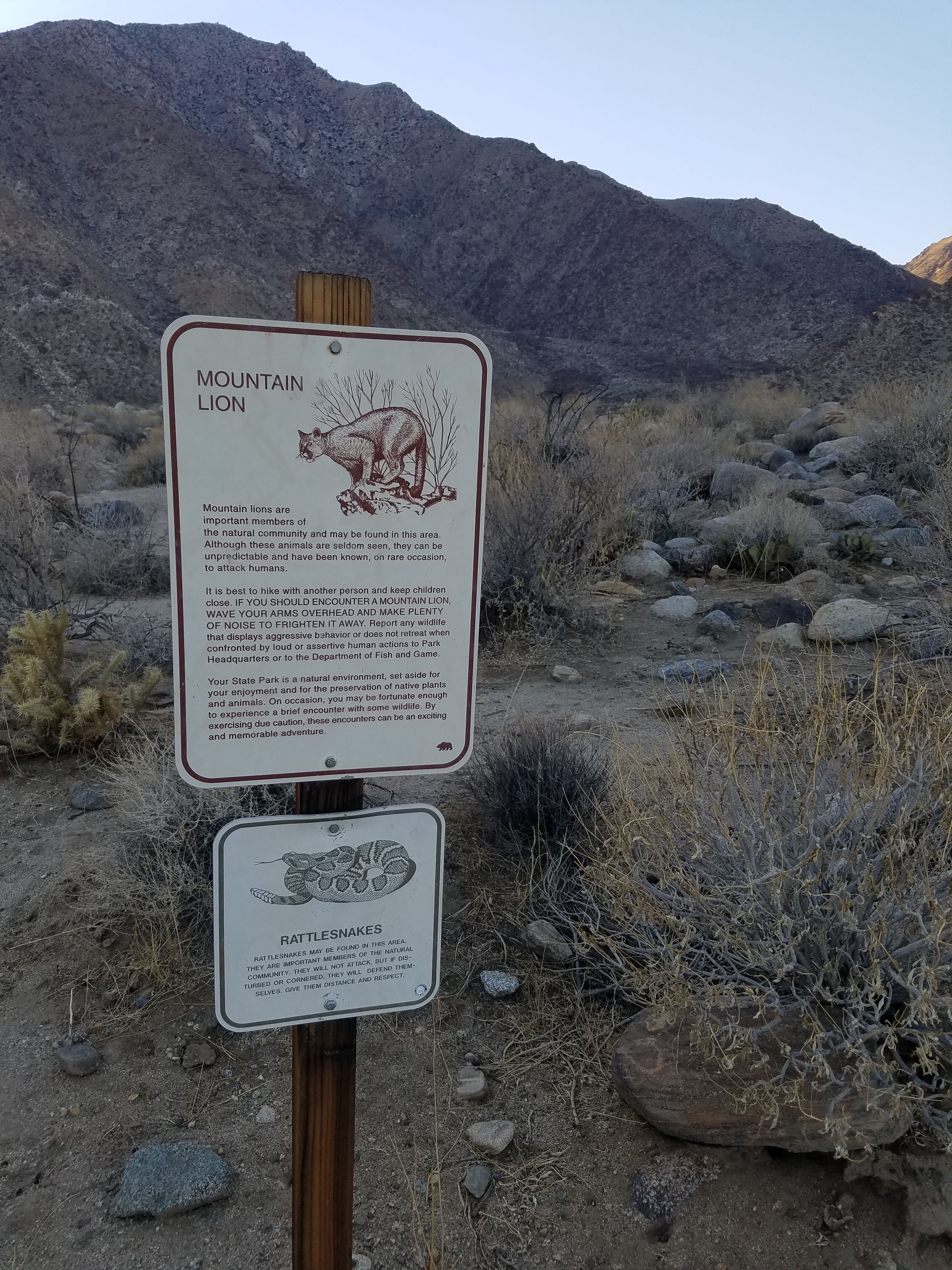
The main trailhead is clearly marked. There is also a side trail marked as an alternative trail. This trail is not as well maintained but meets up with the main trail about a mile into the hike.
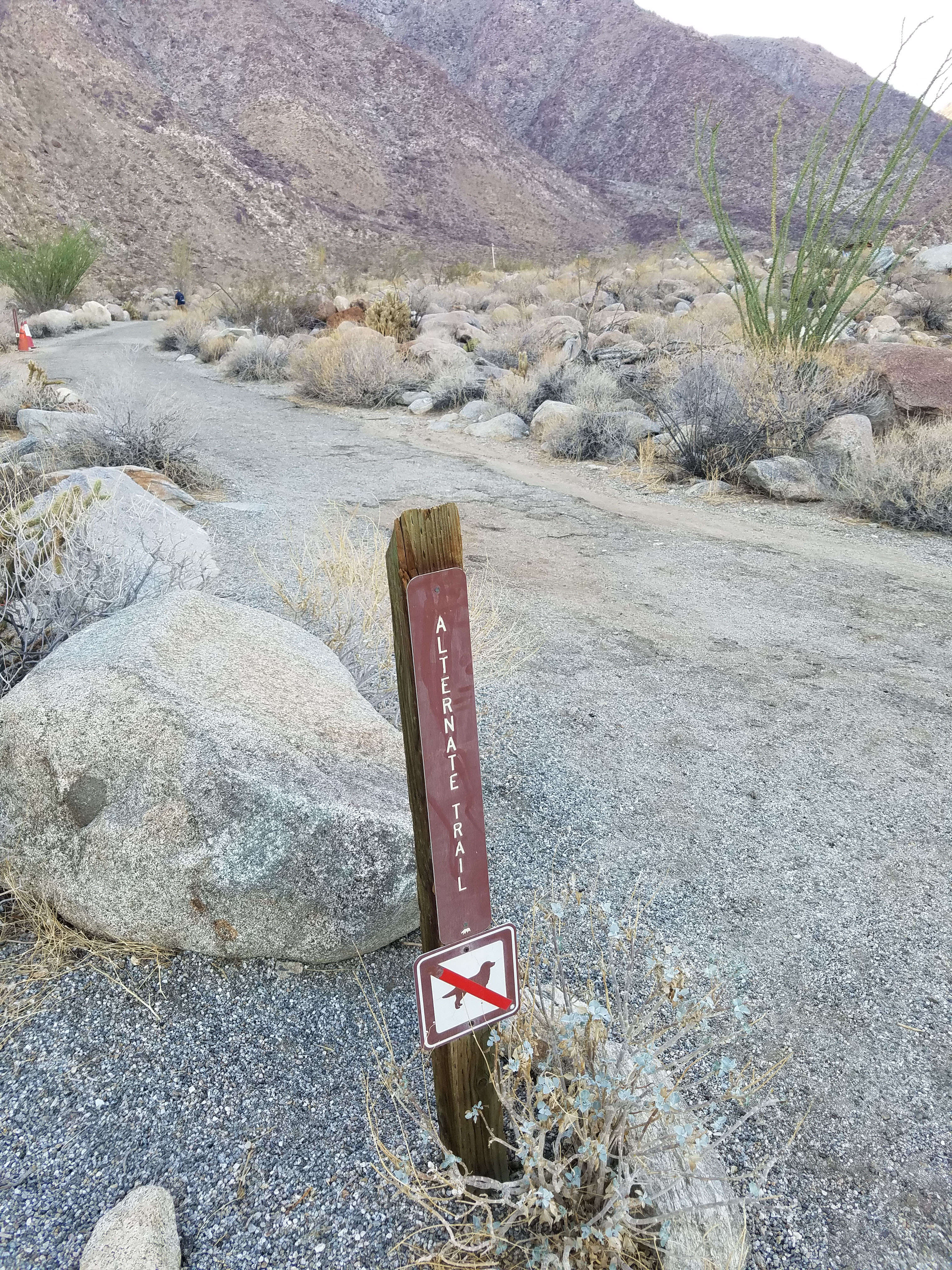
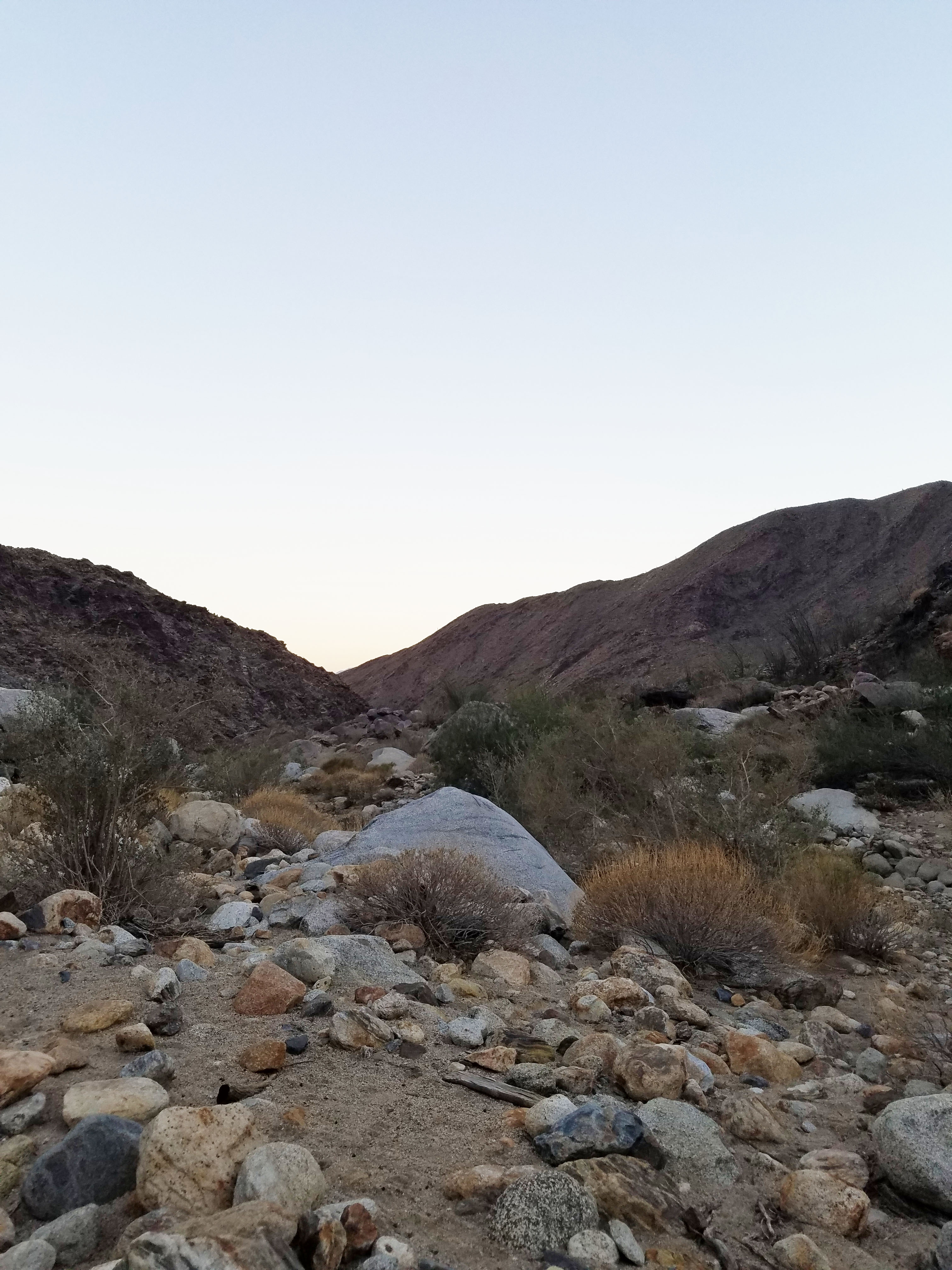
The total distance to the Palm Canyon Oasis is about a mile and a half. The trail is generally easy to follow, but there are a couple of places where you can veer off course. However, you are walking through a narrow canyon so you can’t get too lost.
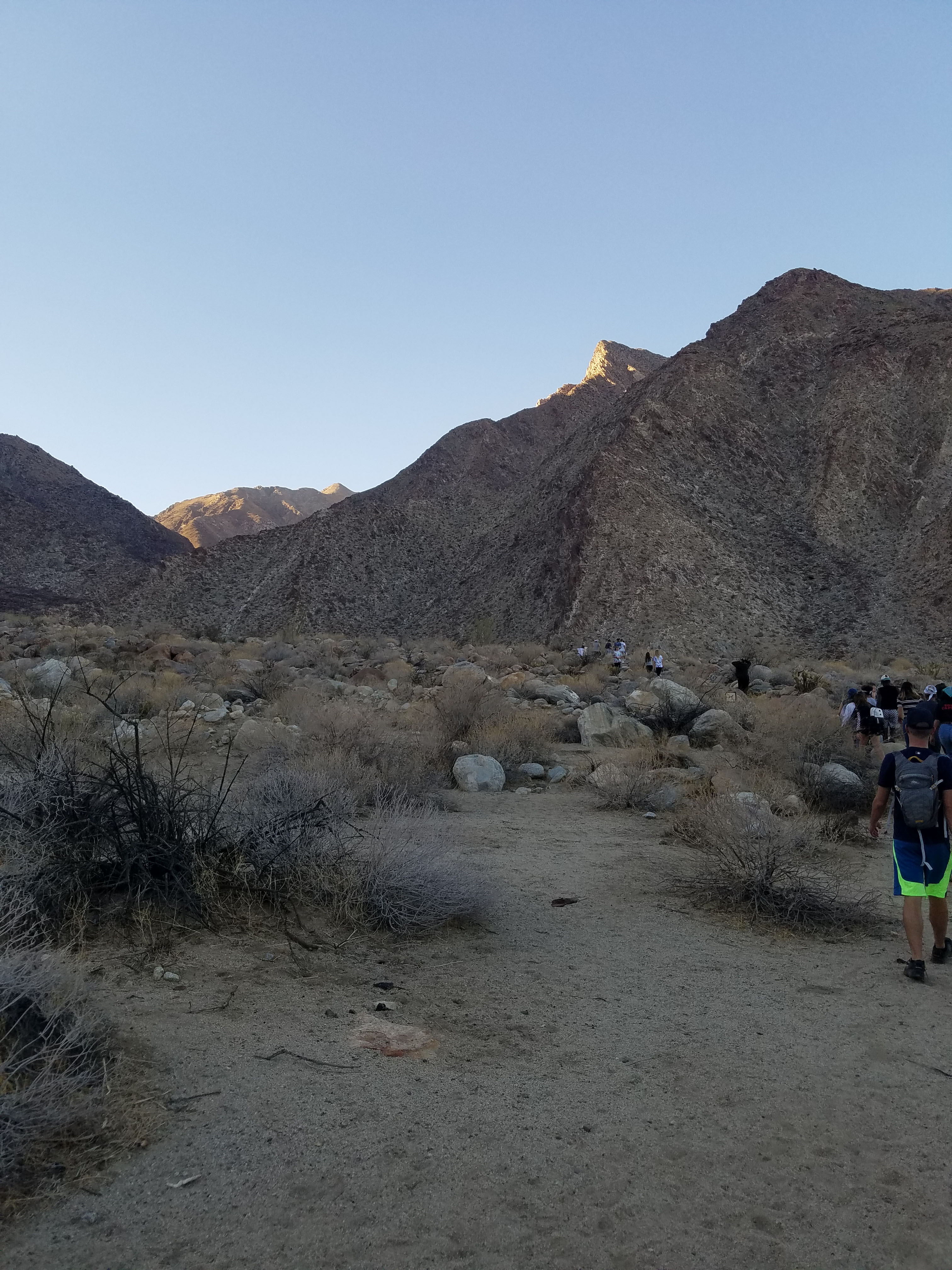
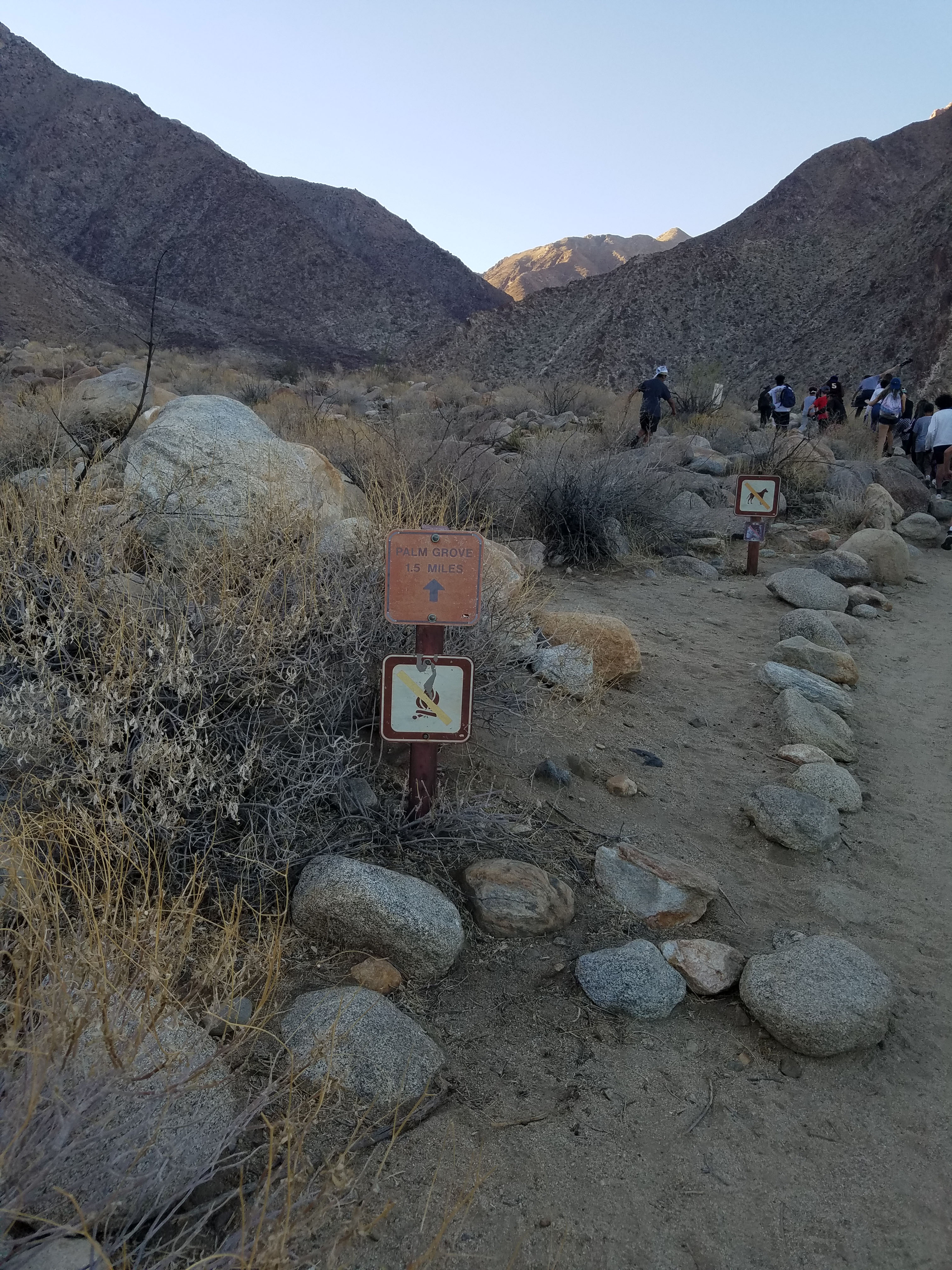
At one point, about a mile in, the trail crosses the wash. This is an area that can get flash floods when it rains. In the spring the wash can sometimes be a small creek. During our fall hike it was completely dry. If you took the alternate trail this is where it meets the main trail.
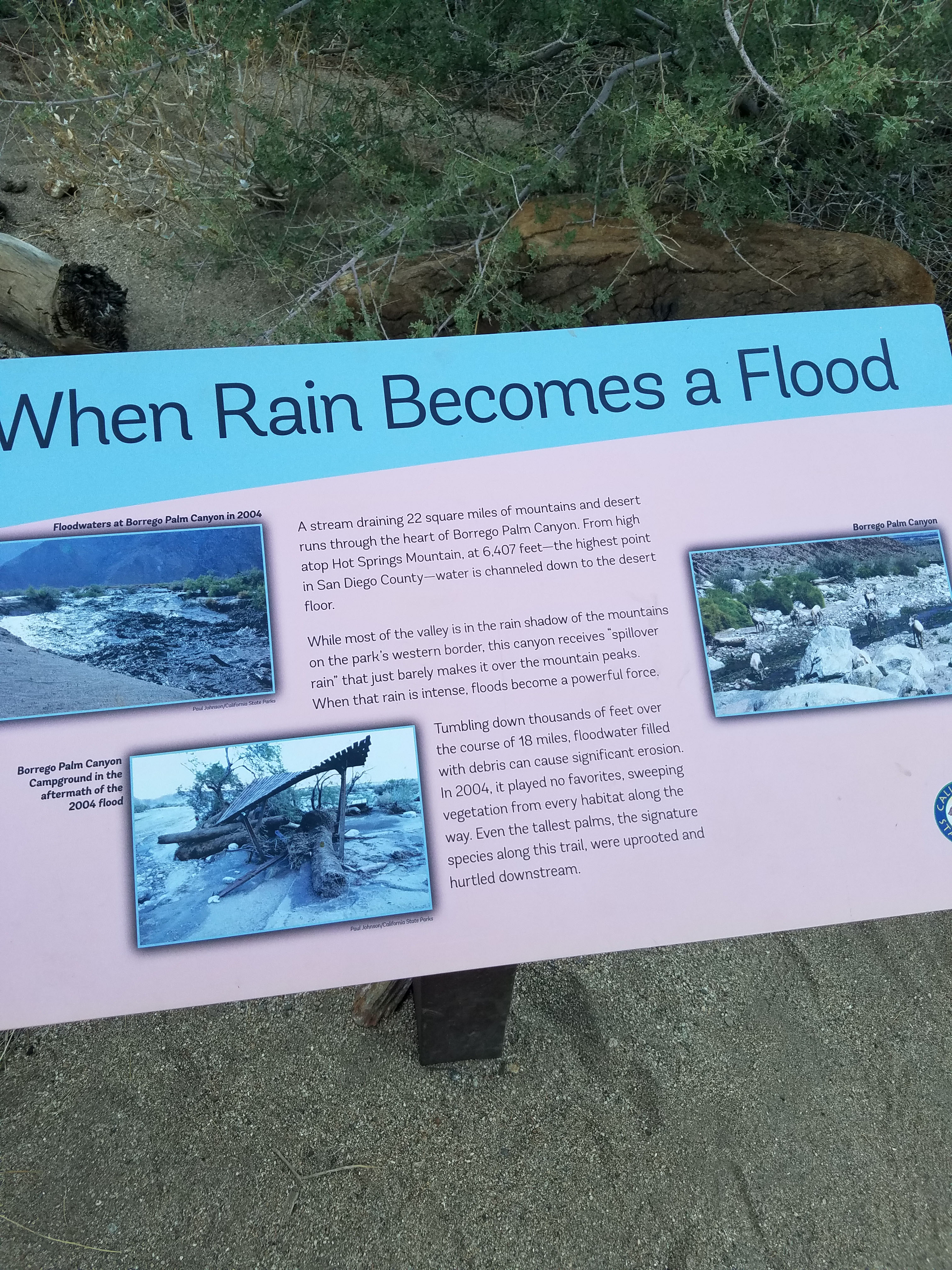
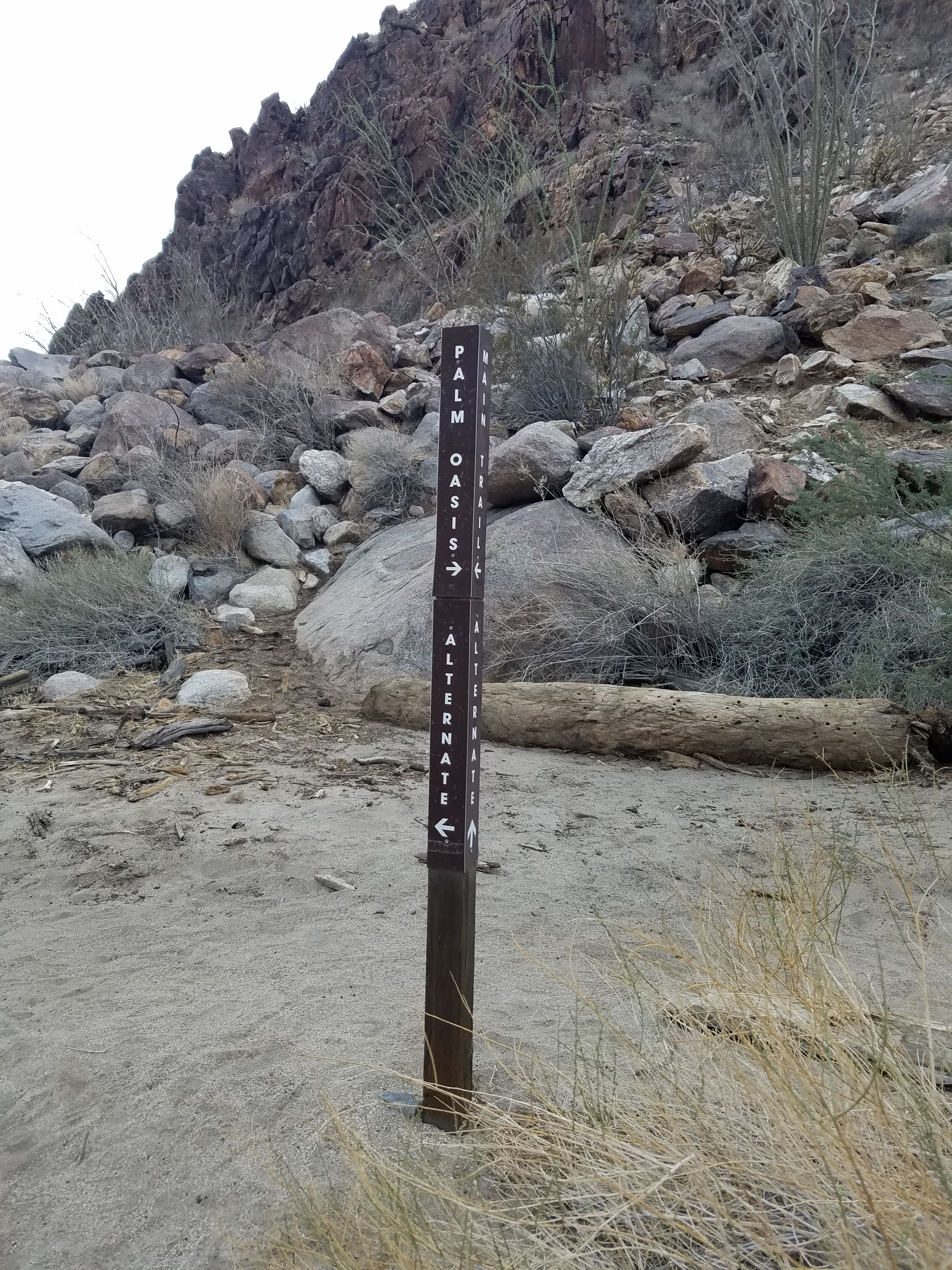
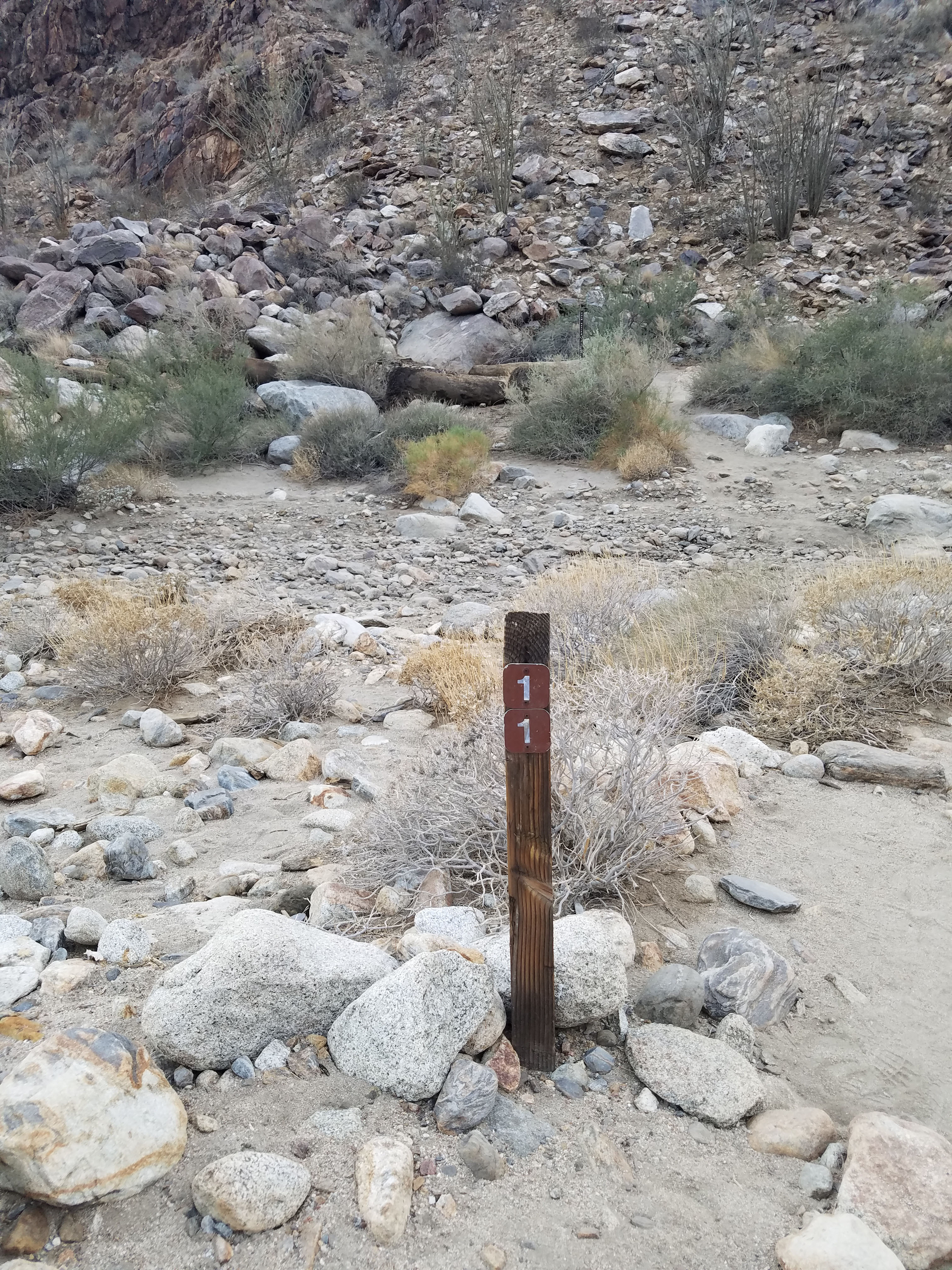
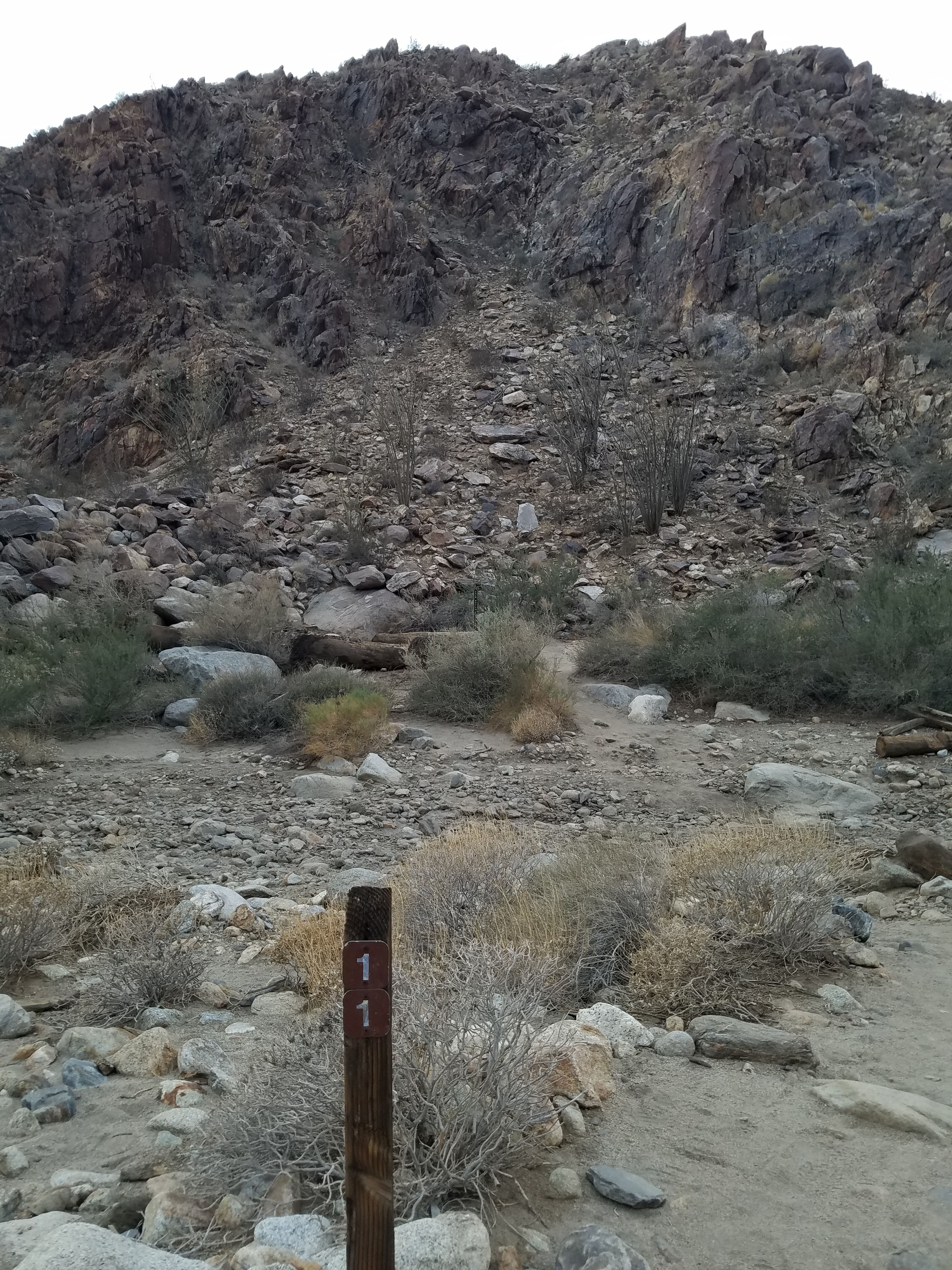
Shortly after crossing the wash you will start to see the palm trees that mark the end of the trail. This is a palm oasis that has formed by the water draining from the mountains above.
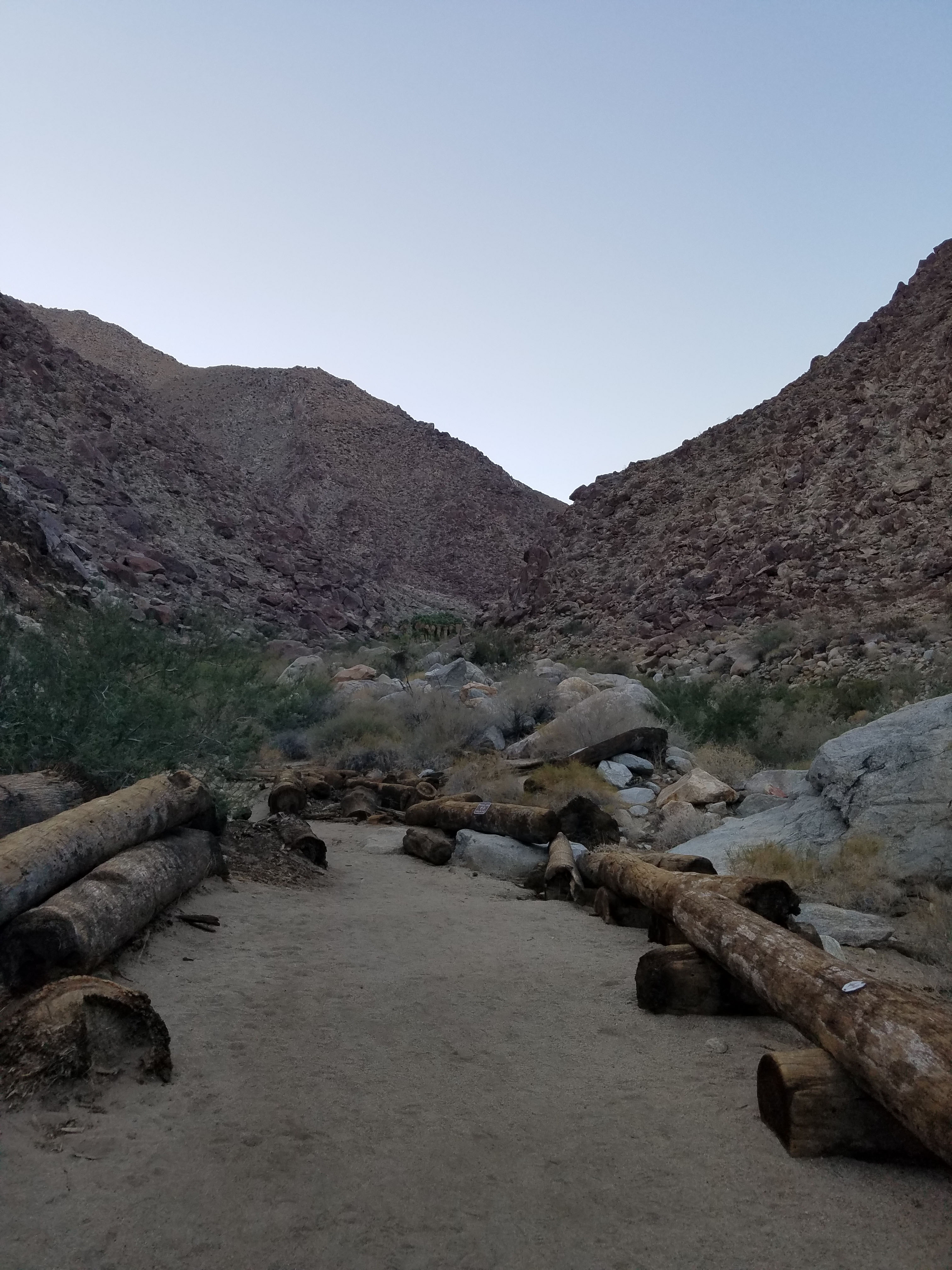
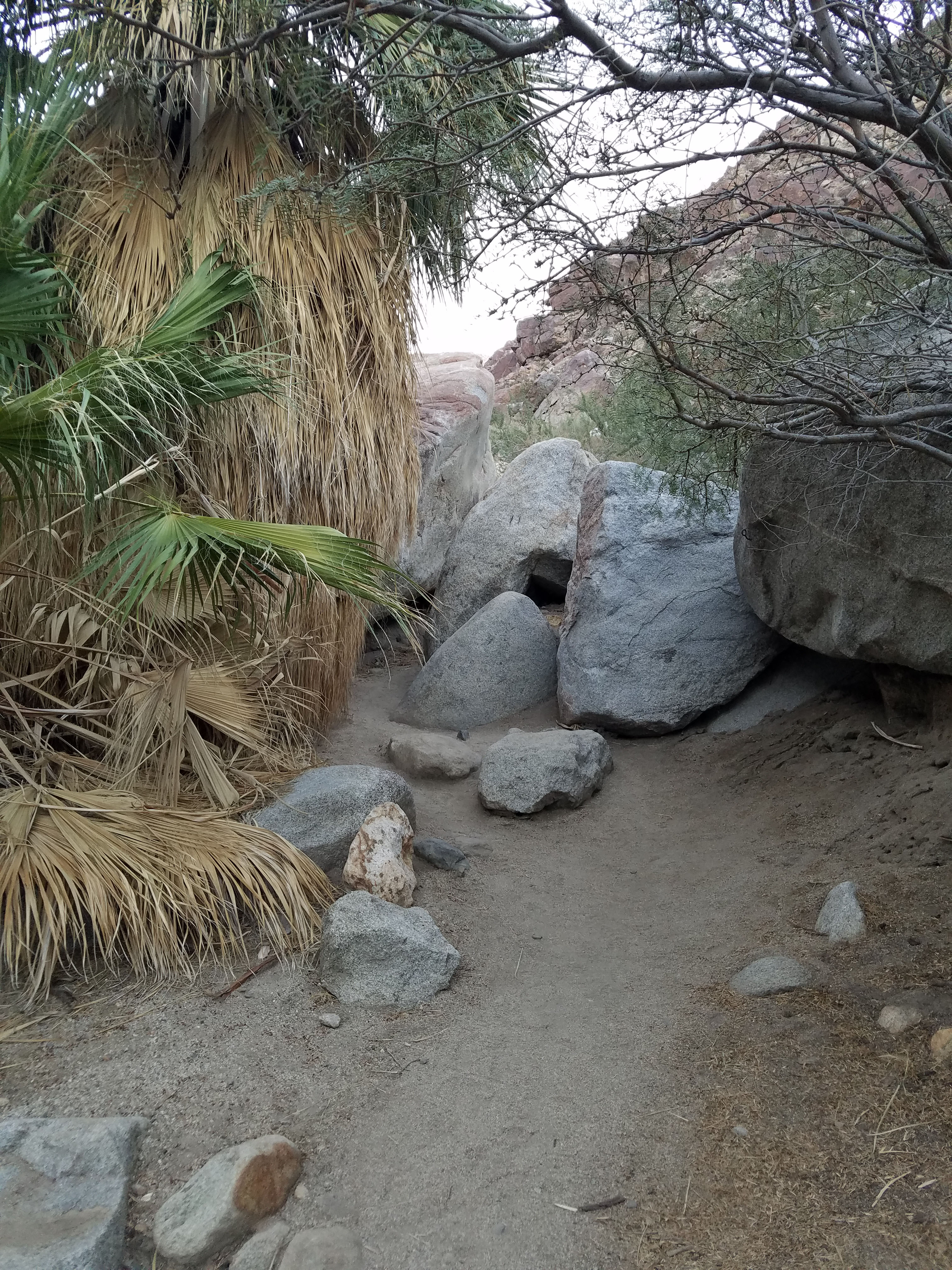
The palm oasis is an impressive site and has plenty of boulders for climbing and exploring. Even if your kids got tired during the hike, they are likely to perk up when they reach this area.
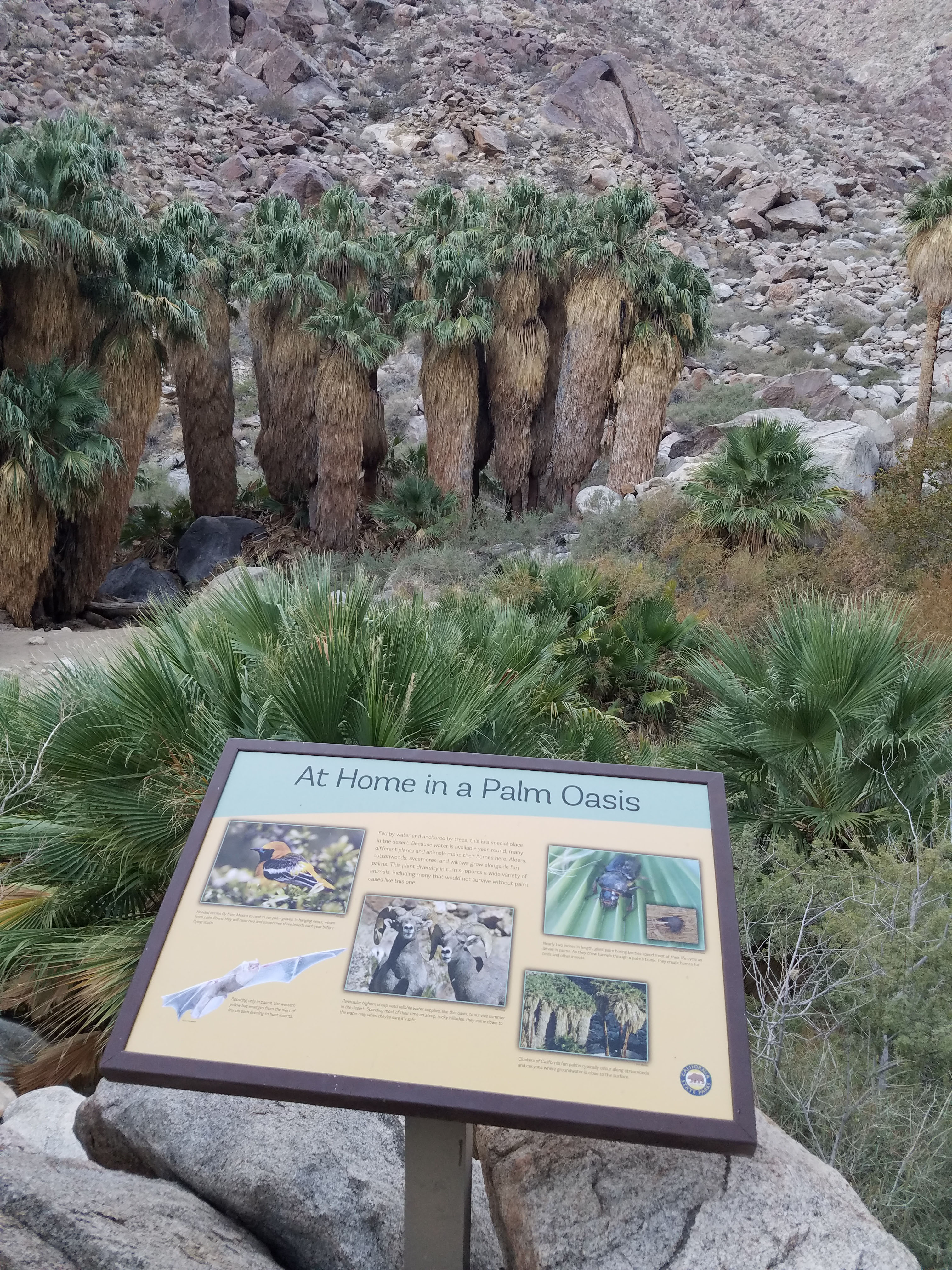
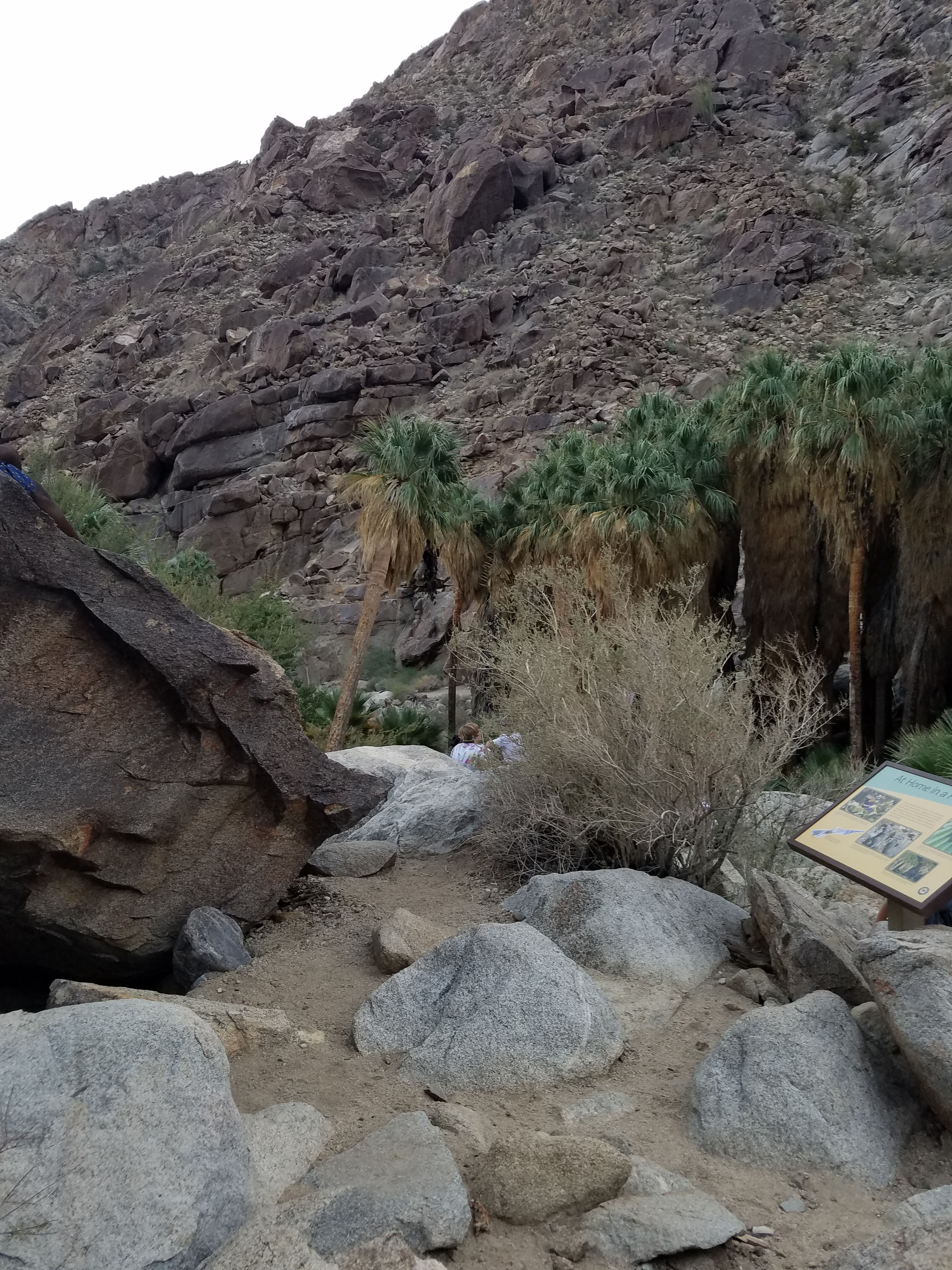
The elevation gain for the hike is about 500 feet from the parking lot to the oasis. However, it is a gradual climb and does not feel that bad at all. The good news is that the way back is all downhill.
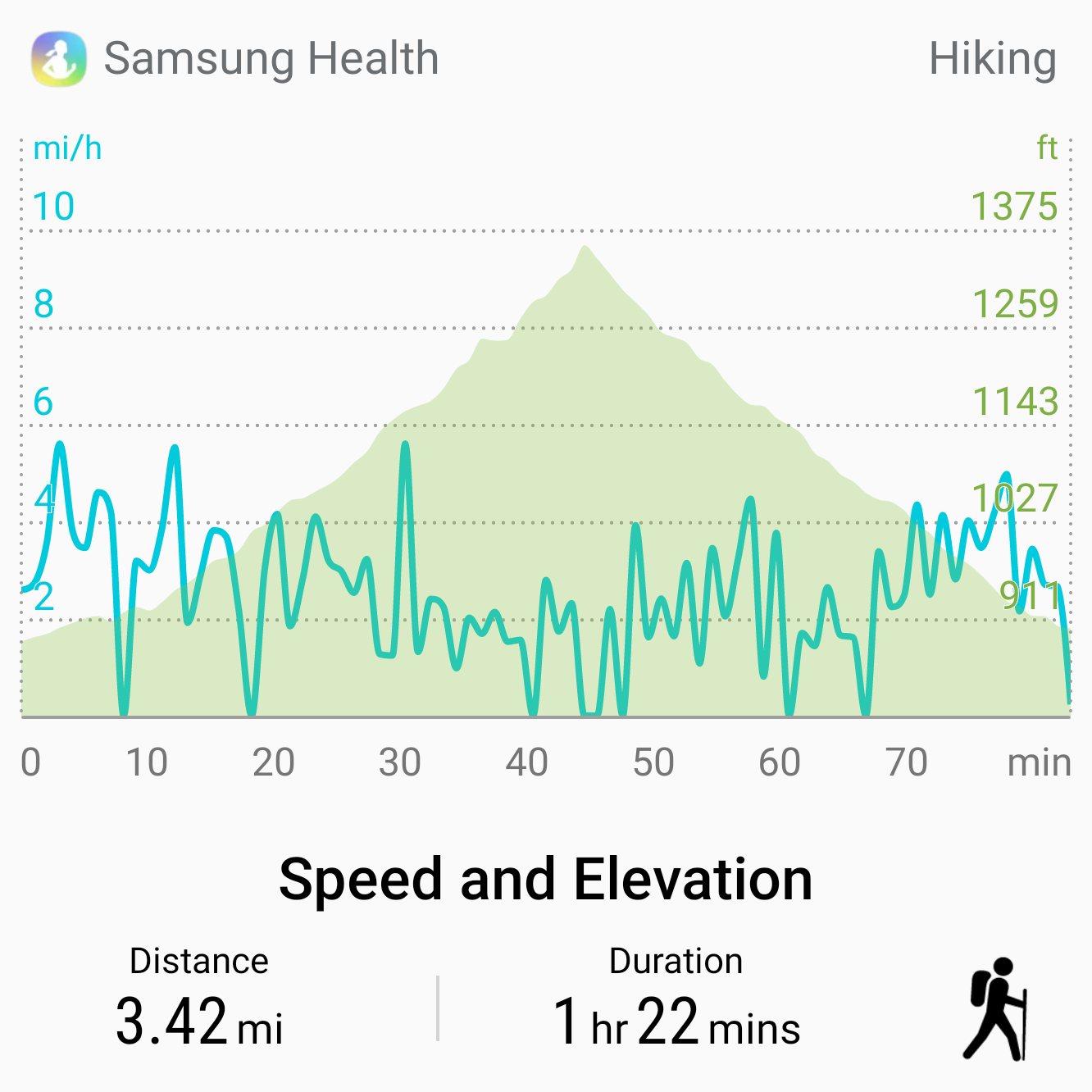
If you like there are hikes that go further into the canyon. We have yet to try those hikes and they get pretty extreme. At this point, we simply head back the way we came. The total round trip on the trail is about 3 miles (plus a little more to get to the car).
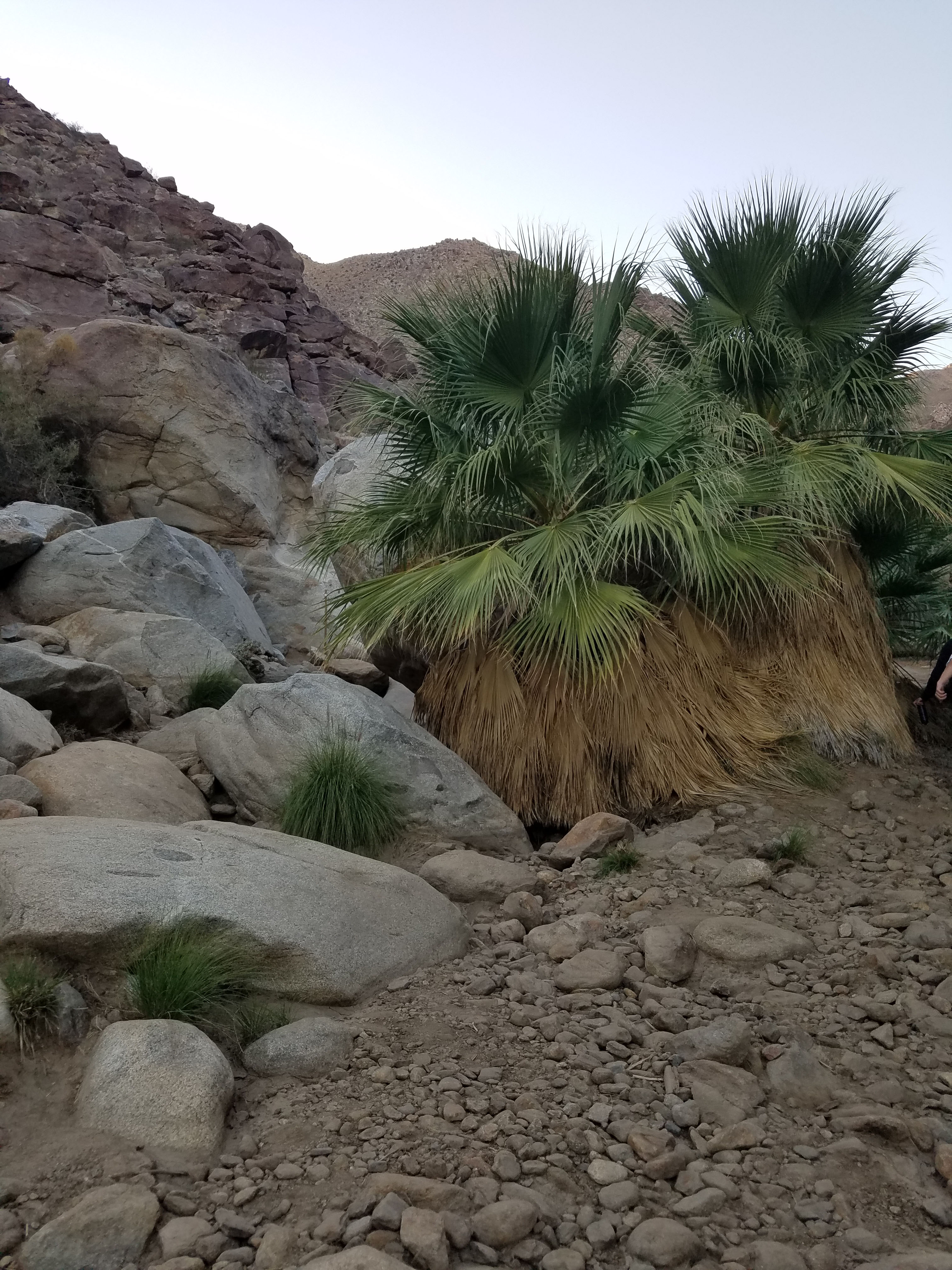
Overall, Borrego Palm Canyon is a great fall to spring hike for the entire family. The wildflowers add some scenery, but also add crowds. The good news is the palm tree oasis is the main attraction and it is there year-round.
Of course, you probably don’t want to do this hike in the summer (which extends through September). At any time of year, you want to bring plenty of water. There will be signs at the trailhead recommending carrying a gallon per person. That is more then we carried, but it is always better to be safe.
Nature Trail Guide
You can pick up a copy of the trail guide at the visitor center or before you go. The trail guide has 15 spots along the hike.


